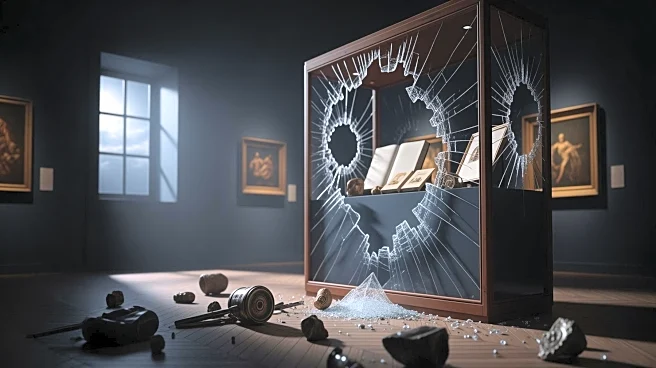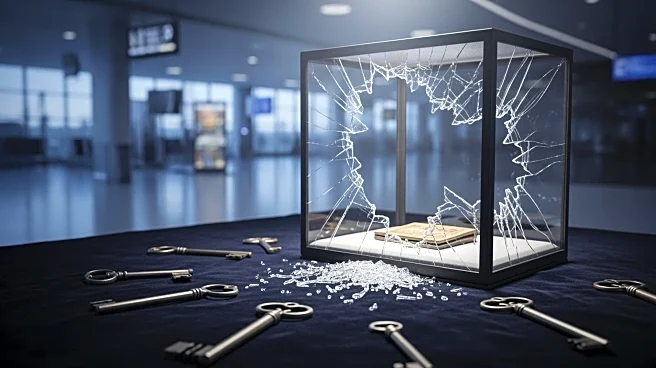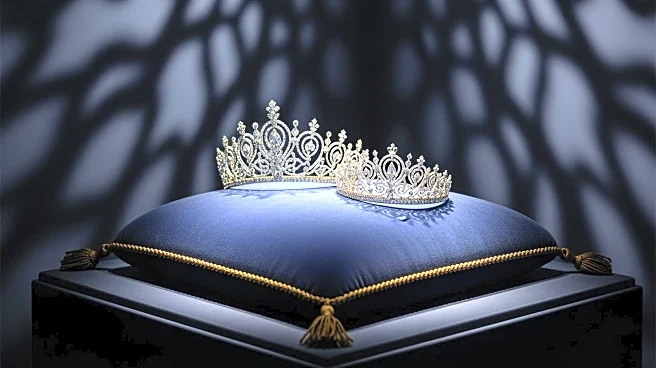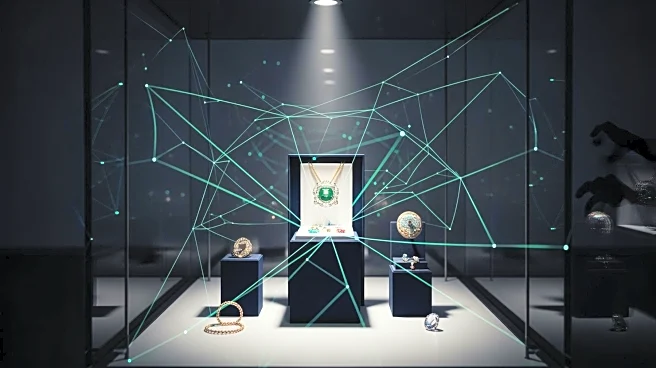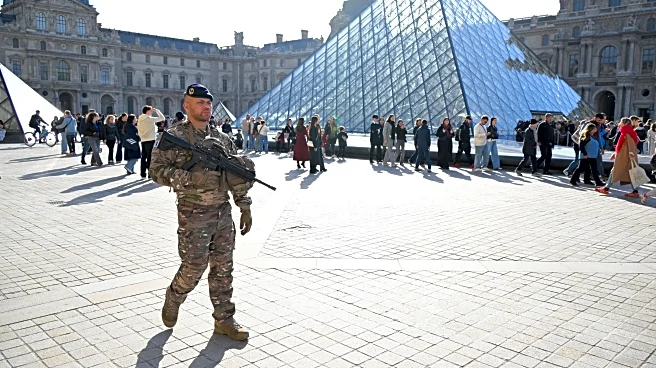What's Happening?
The recent theft of over €88 million worth of jewels from the Louvre's Apollo gallery has been attributed to a group of 'petty criminals,' according to Paris prosecutor Laure Beccuau. Four suspects, all from Seine-Saint-Denis,
have been charged in connection with the heist. The group includes three men with extensive criminal records and a woman charged with complicity. Despite their criminal backgrounds, the suspects are not believed to be part of any high-level crime networks. The stolen items include a brooch and a necklace with significant historical value. The investigation continues as authorities search for additional accomplices and the missing jewels.
Why It's Important?
The identification of the Louvre heist suspects as 'petty criminals' rather than members of an organized crime syndicate highlights a shift in the profile of individuals capable of executing high-stakes thefts. This development may prompt law enforcement agencies to reassess their strategies for preventing and investigating art thefts. The incident also underscores the vulnerability of cultural institutions to sophisticated criminal activities, raising concerns about security measures in place to protect valuable artifacts. The theft's impact extends beyond the art world, as it involves items of significant historical and cultural importance.
What's Next?
As the investigation progresses, authorities are focused on locating the missing jewels and identifying any additional accomplices involved in the heist. The case may lead to increased security measures at museums and cultural institutions worldwide. Legal proceedings against the charged individuals will continue, with one suspect scheduled to appear in court for related offenses. The outcome of the investigation could influence future policies on art theft prevention and the protection of cultural heritage.




